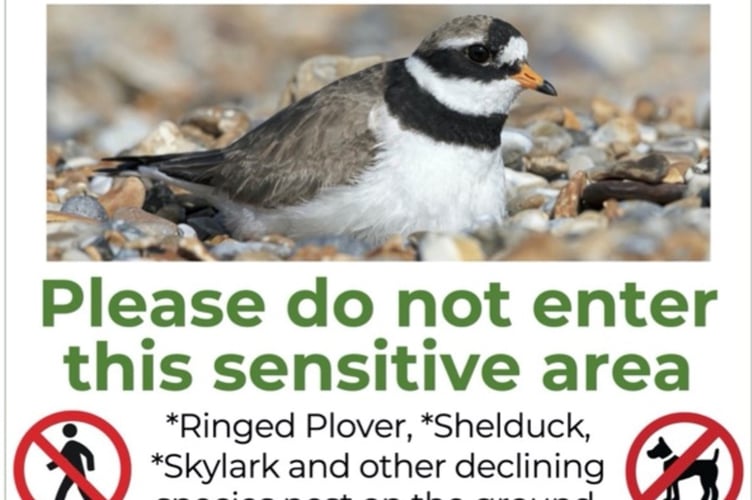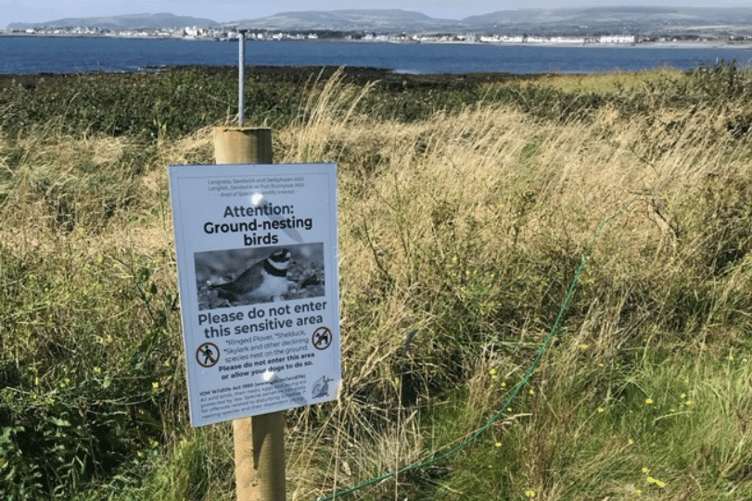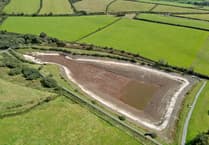When it comes to wildlife protection, simple local measures can work.
That’s the conclusion of a summary report into a trial project to protect nesting birds at Langness during the 2024 breeding season.
The Langness saltmarsh and backshore forms part of the nationally important Langness, Sandwick and Derbyhaven Area of Special Scientific Interest and supports the greatest wild bird diversity of any single site in the Manx nation.
It’s a mosaic of inter-linked habitats that has hosted 202 of the 332 species of wild bird recorded in the Isle of Man including 30 on the endangered red list and 19 on the amber list.
The habitat is made up of coastal grassland, inter-tidal mudflat, saltmarsh, tidal and non-tidal rock, sand and shingle shore, and shallow and deep water.
A trial protection scheme for nesting birds, led by Manx BirdLife, took place during the spring and summer 2024.
Langness was chosen as it has seen historic decline and loss of breeding species of conservation concern across the site. Increased human and human-related pressures have impacted on nesting.
Target species for the project were ringed plover, oystercatcher, eider, shelduck, skylark and meadow pipit.
Two simple cost-effective methods were used.
Two different designs of noticeboard were devised to advise walkers not to enter the saltmarsh and to ask them to prevent their dogs from doing so. These were placed at intervals along the boundary of the saltmarsh and backshore.
With the assistance of the landowner and a local contractor, a post and fence line boundary was installed along the boundary of the southern saltmarsh and backshore for the rest of the breeding season. This ran parallel to the public right of way.
Noticeboards were fixed to every other post, with the two designs alternated along the route.

Local birdwatchers were asked to report any contraventions of the notices and fence line.
And the results were promising.
Two or three pairs of ringed plover bred, producing at least four fledged young - the first successful nesting of this red-listed species at Langness after several years when there was none.
Four or five pairs of oystercatcher produced eight to 10 fledged young and at least six broods of at least 18 fledged eider ducklings were crèched onsite.
Three to five pairs of shelduck produced one or more broods totalling 40 or more fledged ducklings, at least three pairs of skylark bred on or adjacent to the site, producing half-a-dozen fledglings, and at least two pairs of meadow pipit bred on or nearby, producing five or more fledglings.
Excitingly, a pair of short-eared owls apparently took up residence for a few weeks, but nesting was not proven and no young were observed.
There were no incidences of anyone contravening the spirit or messaging of the scheme. All feedback was overwhelmingly positive and the only criticism was from a local resident who questioned why it had not been done sooner.
The report’s authors Neil Morris, Jenny Moore and Allison Leonard noted: ‘It only takes a few motivated people to achieve worthwhile conservation successes.’
Installation of the fencing this year could not take place until May 24, well past the start of the nesting period.
The plan is to repeat the same scheme next year but beginning before the start of the nesting season, preferably in early April.
And ultimately the aim is to build up the scale of the scheme, in agreement with landowners, to provide much-needed protection for more ground-nesting birds and other wildlife.
This could include measures to protect the native avifauna over the longer term and restore lost breeding species such as redshank.


-(1).jpeg?width=209&height=140&crop=209:145,smart&quality=75)
.jpg?width=209&height=140&crop=209:145,smart&quality=75)
.png?width=209&height=140&crop=209:145,smart&quality=75)